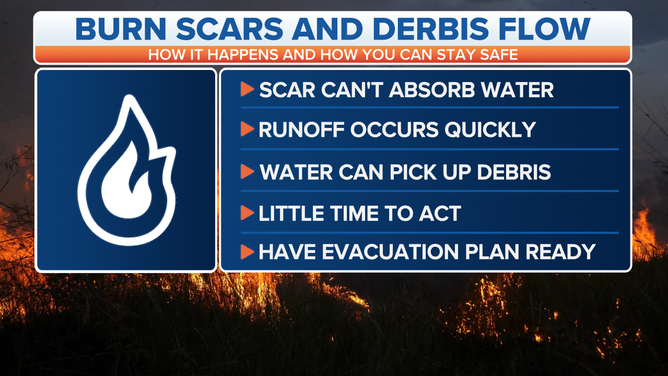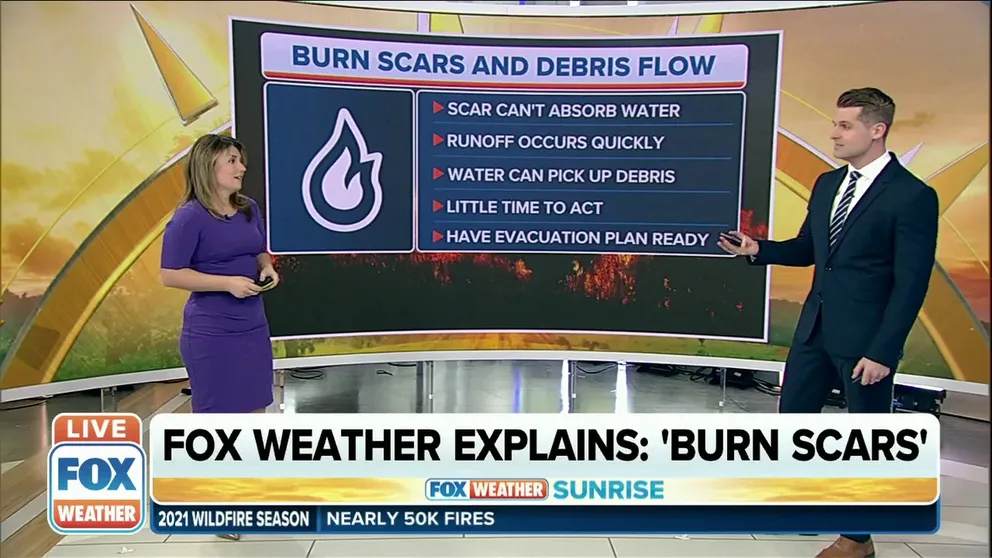What is a wildfire burn scar and how could they have lasting impacts?
Burn scars can create a heightened risk of flooding for years to come.
FOX Weather explains: 'Burn scars'
Wildfires do more than destroy vegetation. The part of the ground where a wildfire burns through is known as a burn scar. These steep regions create a heightened risk of flooding for the years to come.
Firefighters in Southern California are getting a better handle on wildfires burning across the Los Angeles area, but the scorched Earth left behind could have a lasting impact on the area.
Wildfires in portions of the West are doing more than destroying vegetation. The part of the ground where a wildfire burns through is known as a burn scar. These steep regions create a heightened risk of flooding for years to come.
According to the National Weather Service, a layer of ash forms on the topsoil while a water-repellent coating is just below that layer of ash. Water-repellent soils form when organic materials such as trees, shrubs, plants and litter burn at high intensities.

(FOX Weather)
Water-repellent compounds vaporize and condense on colder soil layers below, preventing soil from absorbing water. When rain starts to fall over these regions, the risk of a debris flow (or a mudslide) increases.
The NWS also cautions that a debris flow can start on a dry slope after only a few minutes of heavy rain. These debris flows are dangerous because they can travel faster than a person can run and even outpace a car.
A debris flow can also pick up burnt material, including trees, and flow over areas that did not experience a wildfire.
Just one heavy downpour in areas with burn scars can cause a debris flow, and there might be little time to act.
People living in areas that are affected by wildfires should have an evacuation plan in place.
